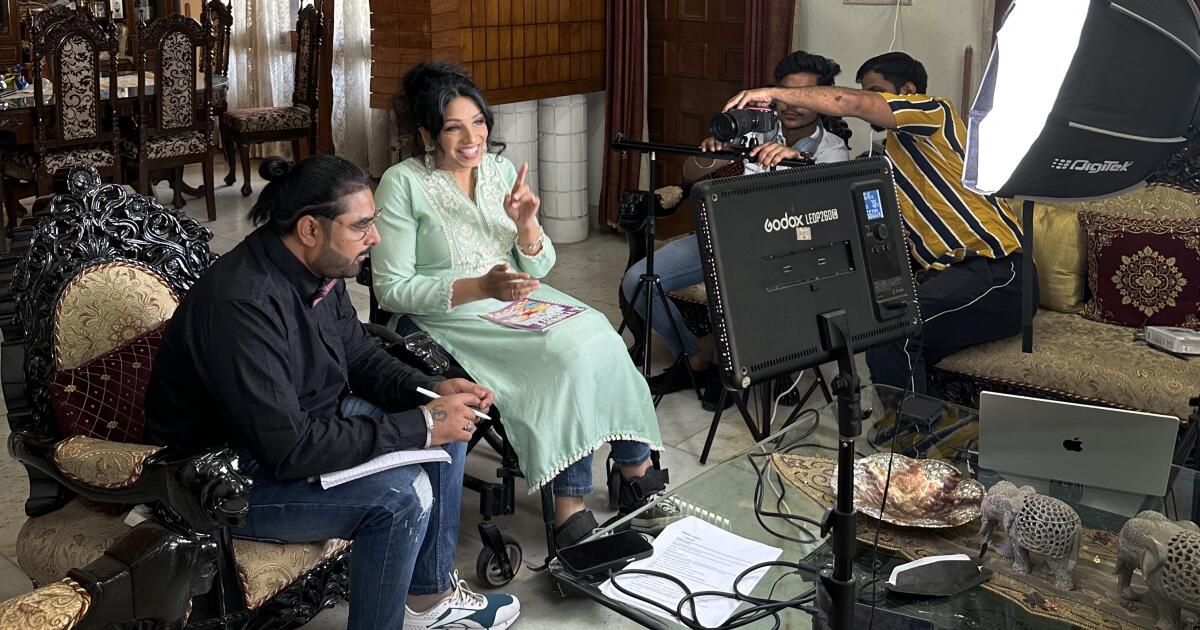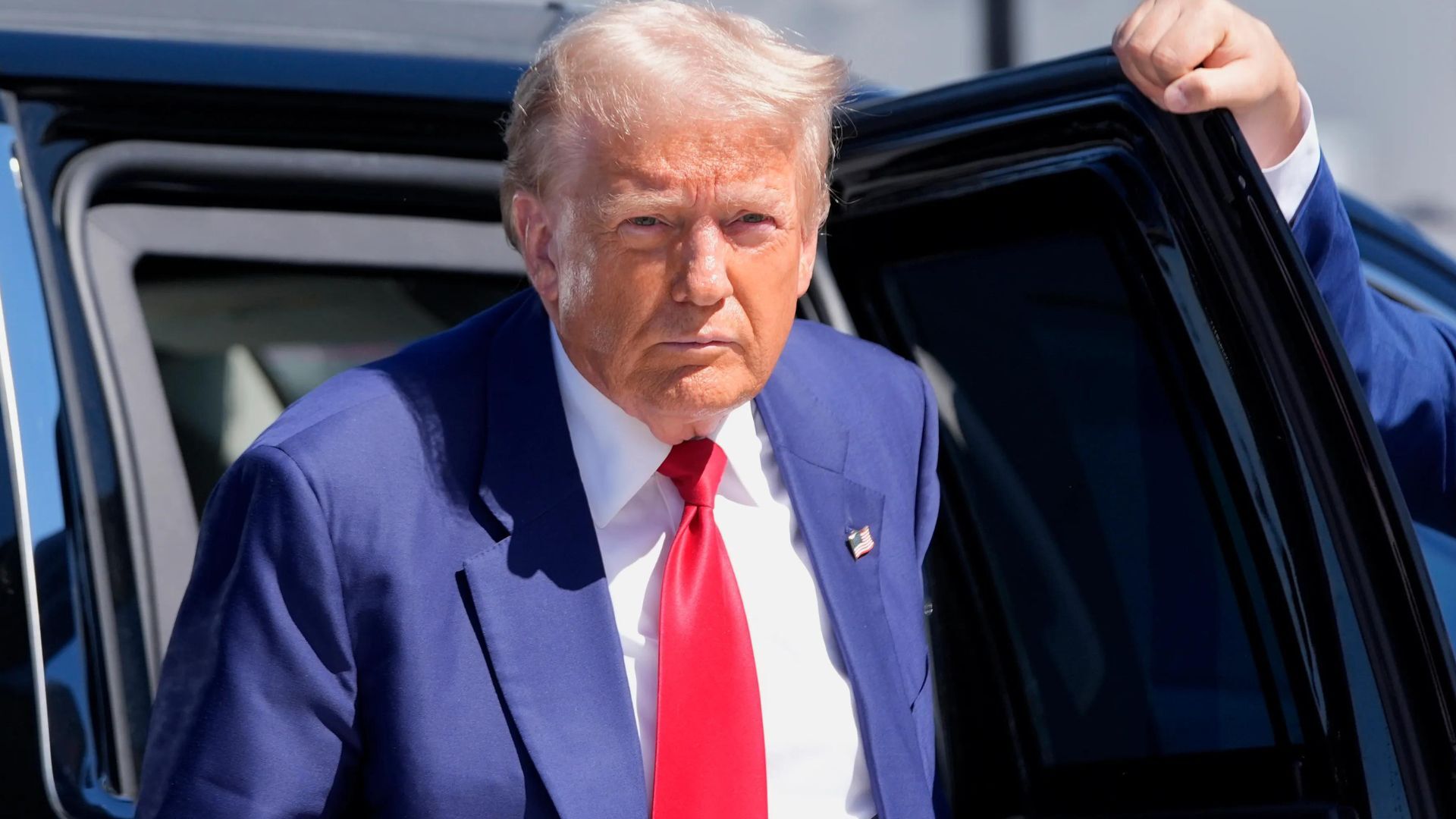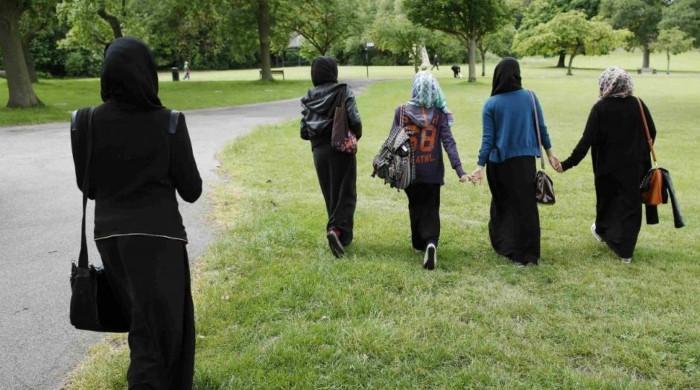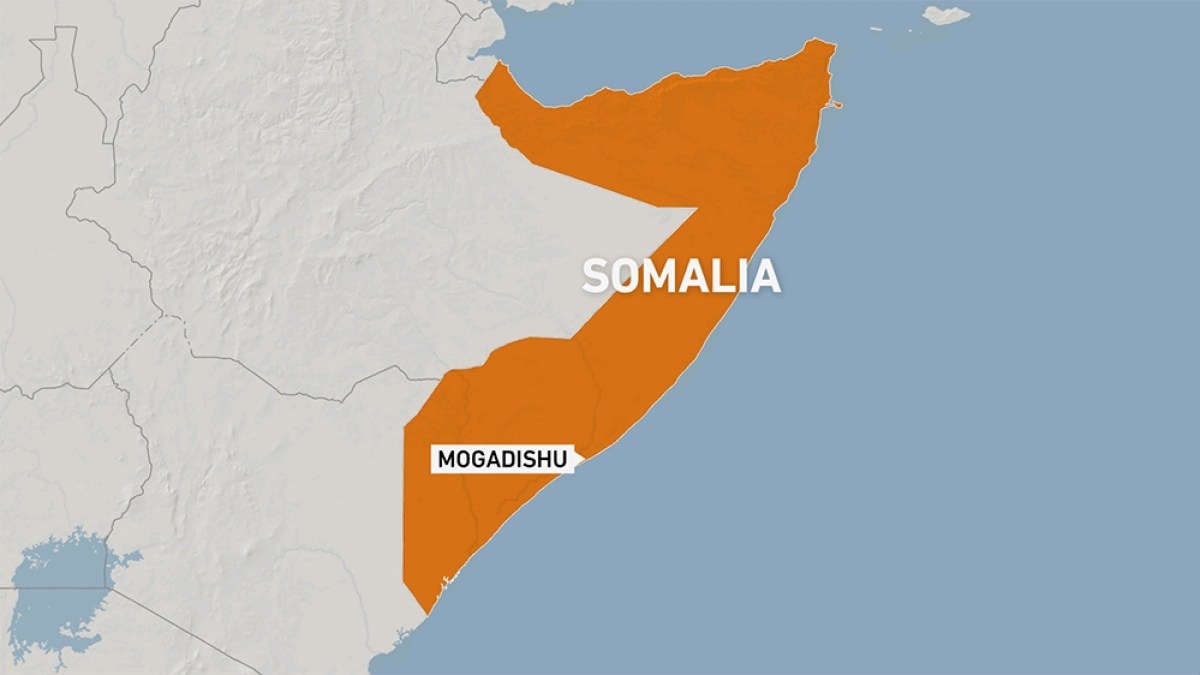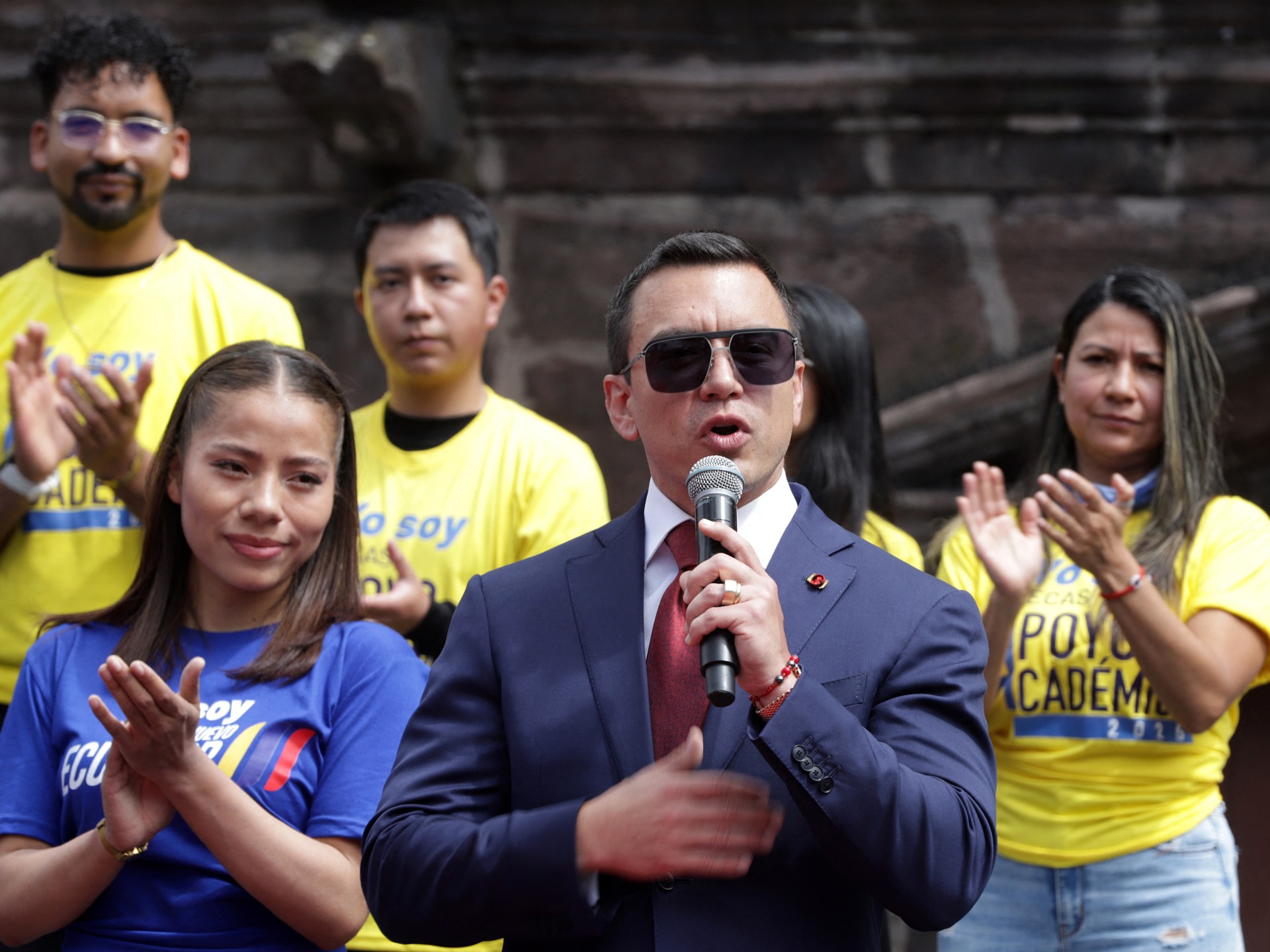Is there life after TikTok?
The question is on the minds of influencers and many American small businesses as lawmakers threaten to ban the Chinese-owned social media app that has become a cornerstone of internet culture and e-commerce.
For an answer, they might turn to India, which has been surviving without TikTok since June 2020.
That month, after 20 of its soldiers were killed in a border clash with China, the Indian government gave TikTok users one day to post effusive farewells and direct their followers to other social media accounts. Then the app went down.
People light candles in Hyderabad on June 17, 2020, to pay tribute to the 20 soldiers killed during a border clash between Indian and Chinese forces in the Ladakh region.
(Mahesh Kumar A. / Associated Press)
“When it was banned, I had nothing,” recalled Gaurav Jain, who was one of more than 200 million TikTok users in the country.
He was 25 years old and had just reached his million followers making self-help videos about mental health, men's style and relationships.
Four years later, Jain runs his own social media marketing agency in Delhi, managing Indian content creators who have either moved to other platforms or joined the influencer world more recently. He had tried to make the transition himself, but found starting from scratch daunting.
“The counter was reset for everyone,” he said. “That gave rise to a lot of new creators.”
The results for former TikTok stars have been mixed.
Gautan Madhavan, founder of Mad Influence, a marketing agency that managed more than 300 content creators before the TikTok ban, said about a third of them were able to regain their reach on Instagram Reels or YouTube Shorts within three months and that many are still trying to catch up.
Those short-video platforms launched shortly after TikTok was banned. Successful users quickly jumped on board, posting up to 10 times a day, according to Saptarshi Ray, a consultant for influencers trying to build their followings.
“Most of them tried everything,” Ray said. “Those were the creators who really thrived.”
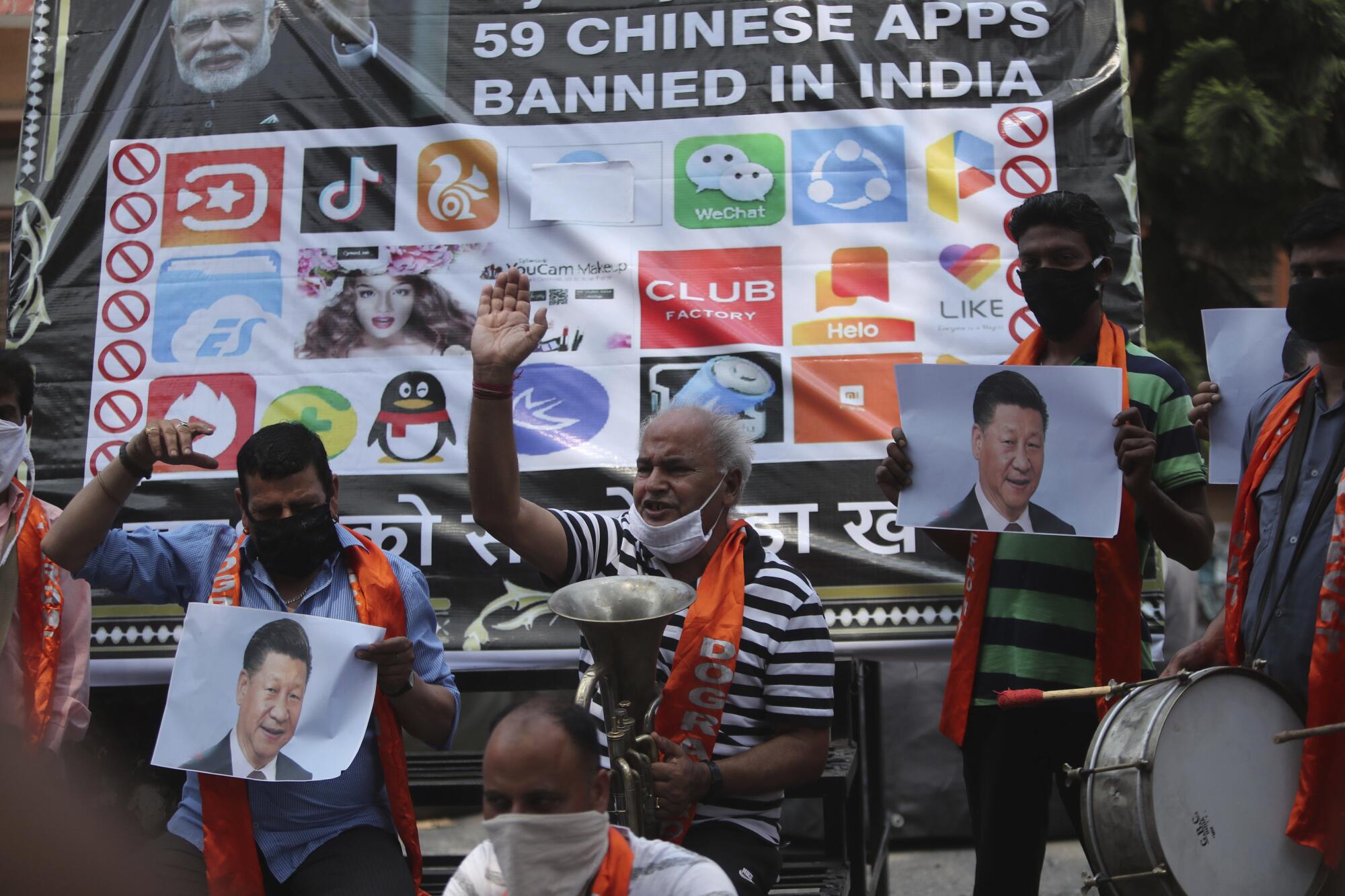
Activists shout slogans against Chinese President Xi Jinping next to a banner displaying the logos of TikTok and other Chinese apps banned in India during a protest in Jammu, India, July 1, 2020.
(Channi Anand/Associated Press)
India was TikTok's fastest-growing user base before the ban, which cut off a vital source of revenue for creators there.
The stakes are even higher in the United States, where the app has more than 170 million users, including 7 million businesses that TikTok says generated $14.7 billion in revenue last year from marketing on the platform. The Pew Research Center found that a third of Americans used TikTok last year, up from a fifth in 2021.
In April, President Biden signed a bill to ban the app starting in January 2025 unless Chinese parent company ByteDance Ltd. agrees to sell the app to someone in a country not considered a foreign adversary.
The threat comes as suspicions between the United States and China have intensified, rekindling concerns that TikTok could share sensitive data with the Chinese government.
The proposed ban still faces major hurdles. Both TikTok and a group of American content creators filed separate lawsuits, arguing that blocking the app would be an unconstitutional attack on free speech. The Trump administration had also attempted to ban TikTok, but backed off after federal courts challenged it.
TikTok has sought to assure the US government that its users' data is protected on American servers. And although its parent company is based in Beijing, TikTok has moved its operations to Singapore under the direction of a Singaporean chief executive.
The United States, along with Britain and Australia, has already banned the use of TikTok on government devices, but digital marketing experts say many American users are not yet seriously considering the possibility of a ban.
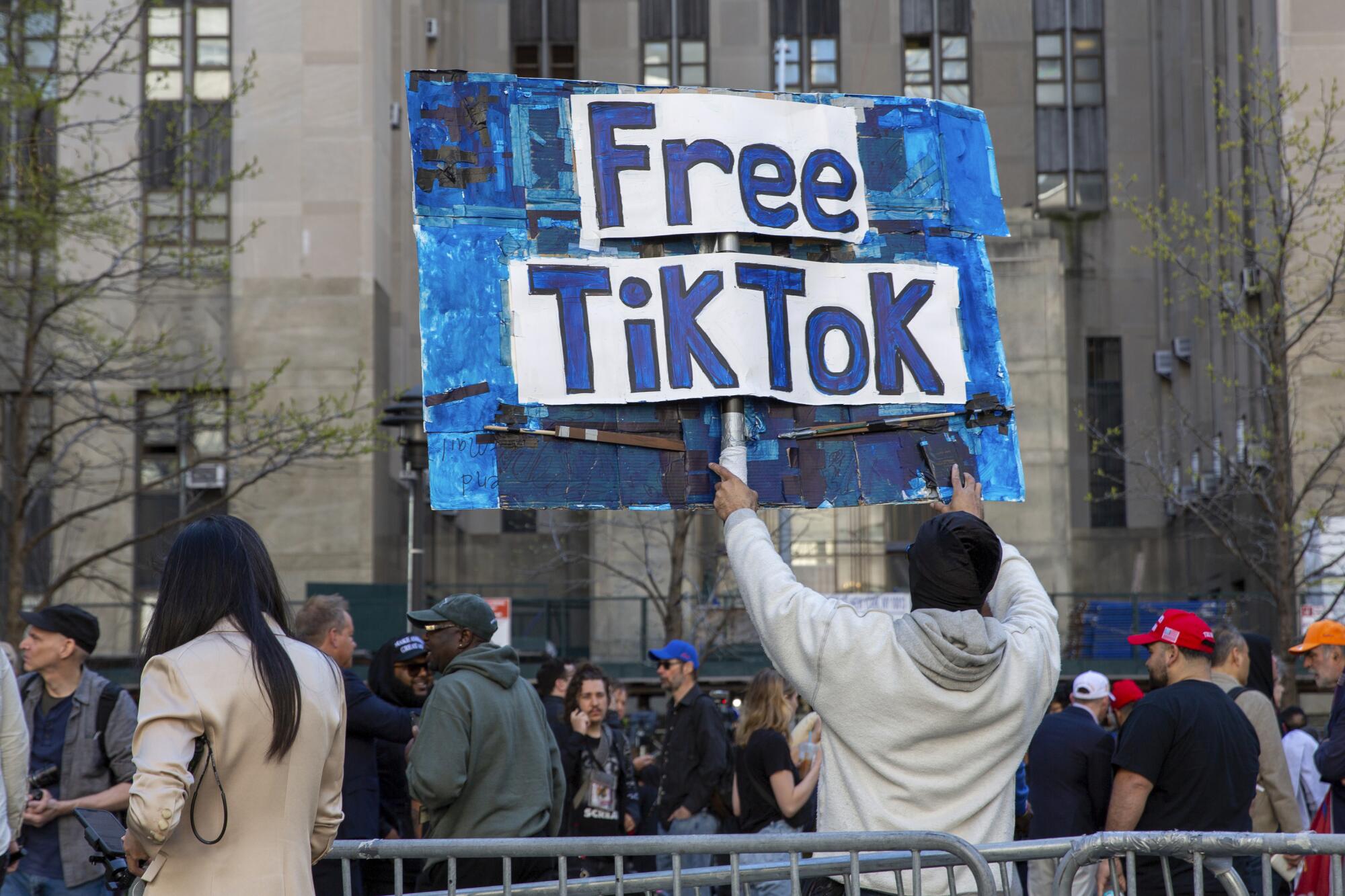
A man protests outside the New York courthouse where Donald Trump's trial for his silence began on April 15, 2024.
(Ted Shaffrey/Associated Press)
“I don’t think the average TikTok user has synthesized in their brain that this is going to go away,” said Lawrence Vincent, associate professor of the Practice of Marketing at USC’s Marshall School of Business. “They’ve heard about it, but it’s not real until it is.”
There has been little early migration to other platforms, but former TikTokers in India advised their American counterparts to prepare for the worst.
“We used to hear rumours about this happening, but we never really believed it,” said Ashi Khanna, a 26-year-old influencer from Delhi.
In 2017, when the app was known as Music.ly, he launched his career on TikTok by posting playback videos and eventually amassed 1.7 million followers. He managed to post a farewell directing them to Instagram and YouTube, where he already had fewer followers, but fewer than 20,000 did.
Since then, Khanna has focused on Instagram and has managed to match her previous follower count.
Unlike TikTok, which never placed a premium on production quality, Instagram required a more polished aesthetic that could mean spending hours on a single reel.
“There is a big difference,” Khanna said. “You need to understand what the audience likes, and that is not the same across all platforms.”
Ankita Chhetri, 22, The Mumbai-based writer said experimentation was the key to life beyond TikTok.
She rose to fame on TikTok in 2019 after posting a video of herself lip-syncing to a popular Bollywood song. With 8.2 million followers, she landed promotional deals with record labels and abandoned her plans to become a nurse in hopes of making it as an influencer and actress.
After the ban, she started a YouTube channel and transitioned from lip-syncing to carefully planned videos on beauty, travel, fashion and inspirational quotes. As she gradually grew her following to 1.6 million, she used her improved engagement stats to pitch brands for potential collaborations.
Still, Chhetri said there are times when he misses the old days.
“TikTok has incredible loyalty among its audience,” he said. “On Instagram, even if people watch and like your content, they are still hesitant to hit the follow button.”
Indian entrepreneurs created their own versions of TikTok, but failed to gain much of an audience.
“I still felt invisible, there was no one there,” said Shreyas Mendiratta, a 23-year-old hospital worker who posted his comedy videos on Indian startup apps for a few months before giving up. “On TikTok, I felt seen, I felt heard.”

Geet Jain records herself for social media.
(Courtesy of Geet Jain)
His videos also don't perform as well on Instagram and YouTube, which he says lack TikTok's broad international appeal.
“It reduces the chances of them going global,” he said. “This is what I face on Instagram on a daily basis. I am very restricted to the region I am in geographically.”
Geet Jain, a motivational speaker and English teacher, was visiting the United States when India banned TikTok. She was still able to use the app, but none of her 7 million followers in India could see her posts offering relationship advice, comedy and English lessons.
“It was like a whirlwind of confusion about what to do next,” said Jain, who declined to give her age.
She turned to Instagram and went from 68,000 followers to 1.3 million, but never achieved the same kind of exponential growth. Some of her TikTok followers found her difficult to find.
Returning to the United States this year for an extended stay with her sister in Seattle, she began posting on TikTok once again.
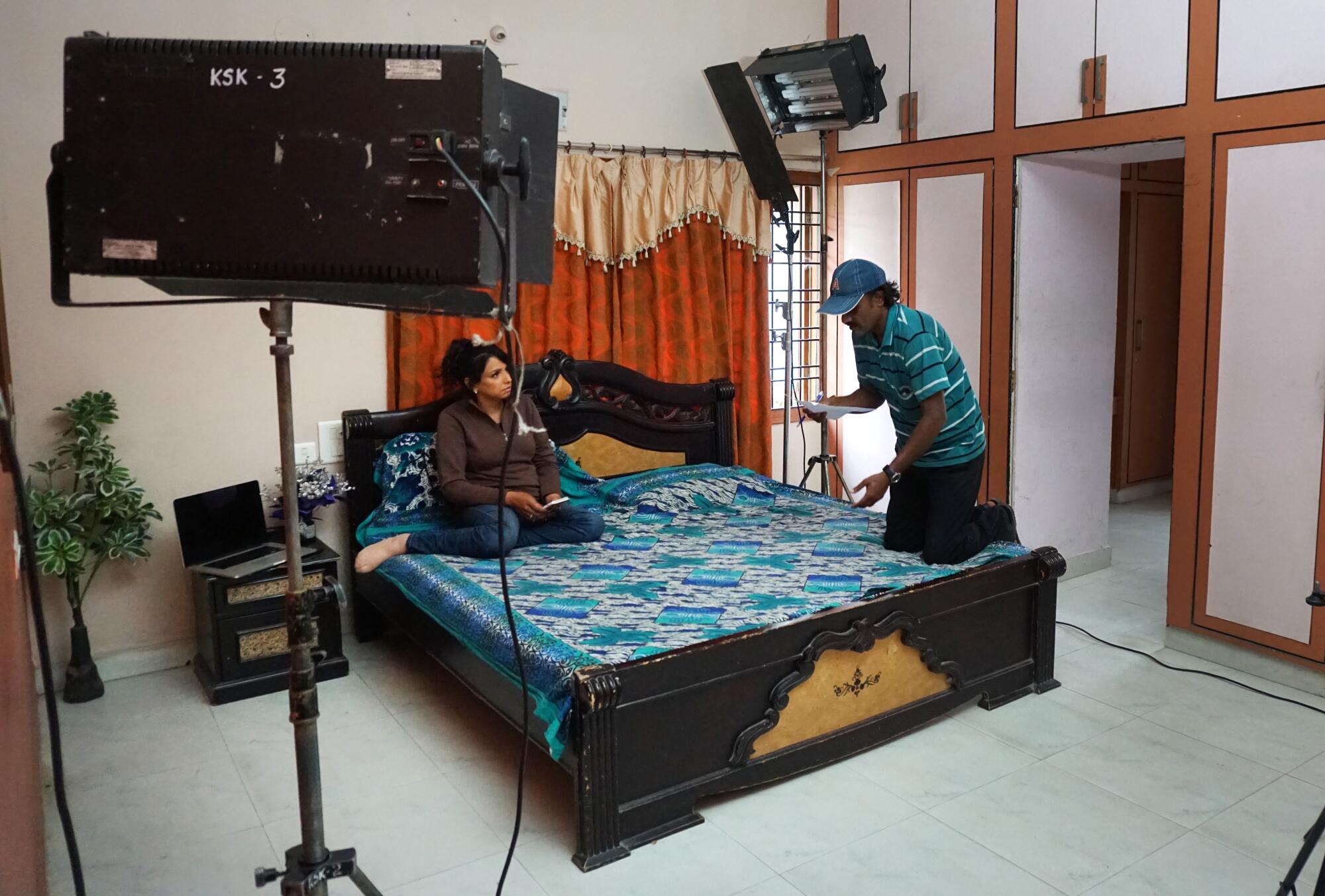
Geet Jain, an inspirational speaker and English teacher in India, was in the United States when India banned TikTok in June 2020.
Returning to the United States this year for an extended stay in Seattle, she began posting on TikTok once again.
(Courtesy of Geet Jain)
But she no longer knows what viewers want. The clips have become longer, with stories told more casually and less dancing and playback than she remembers. There is more competition when it comes to her brand of educational content.
While some of her English-language videos have been successful, she is reluctant to invest too much in TikTok again.
“If they ban it in the US, it will be even more devastating for me,” he said. “Then my accounts will disappear.”

